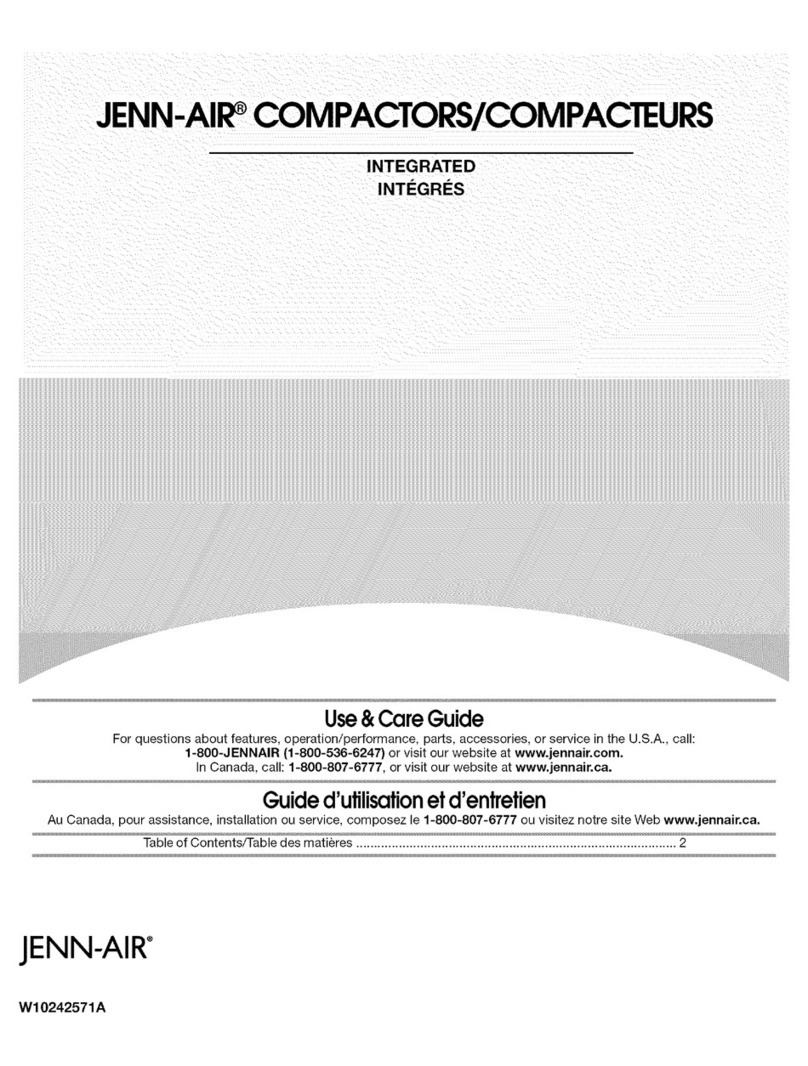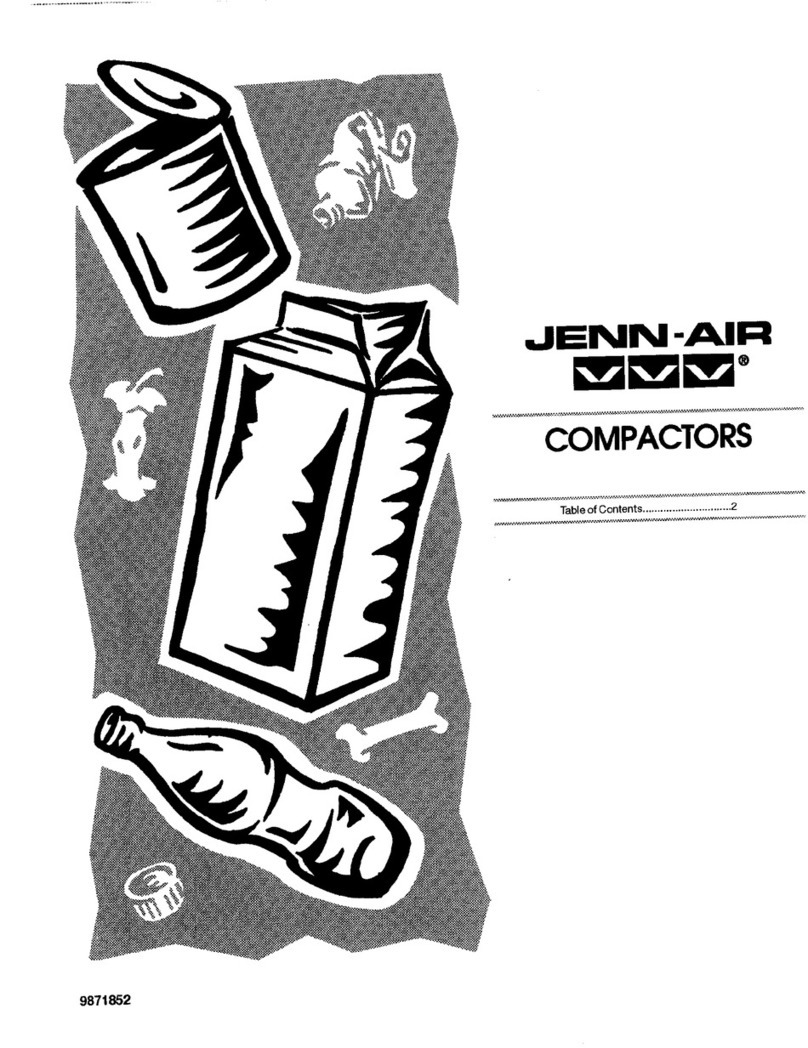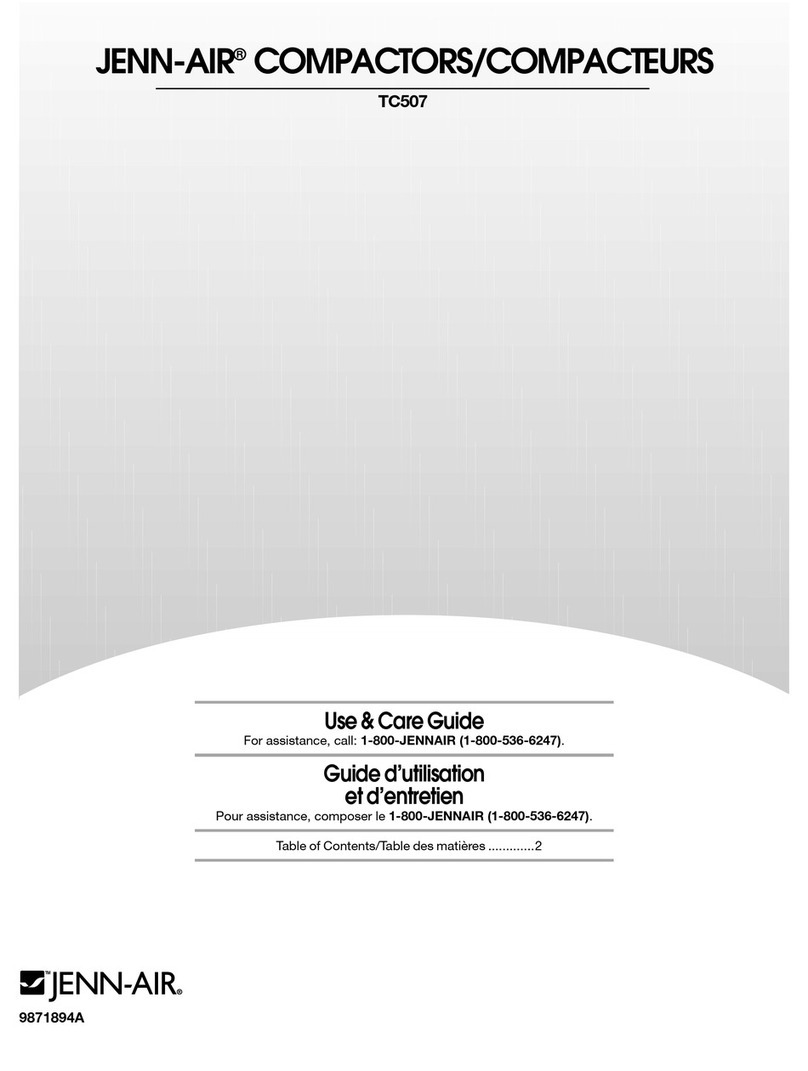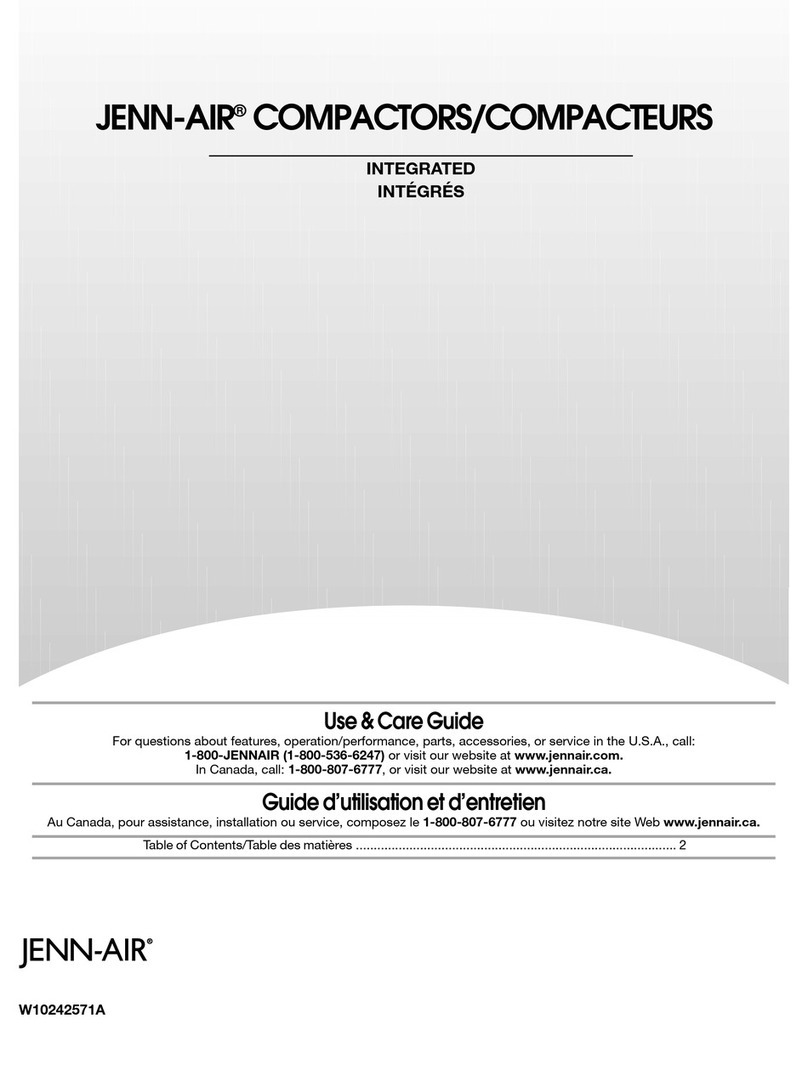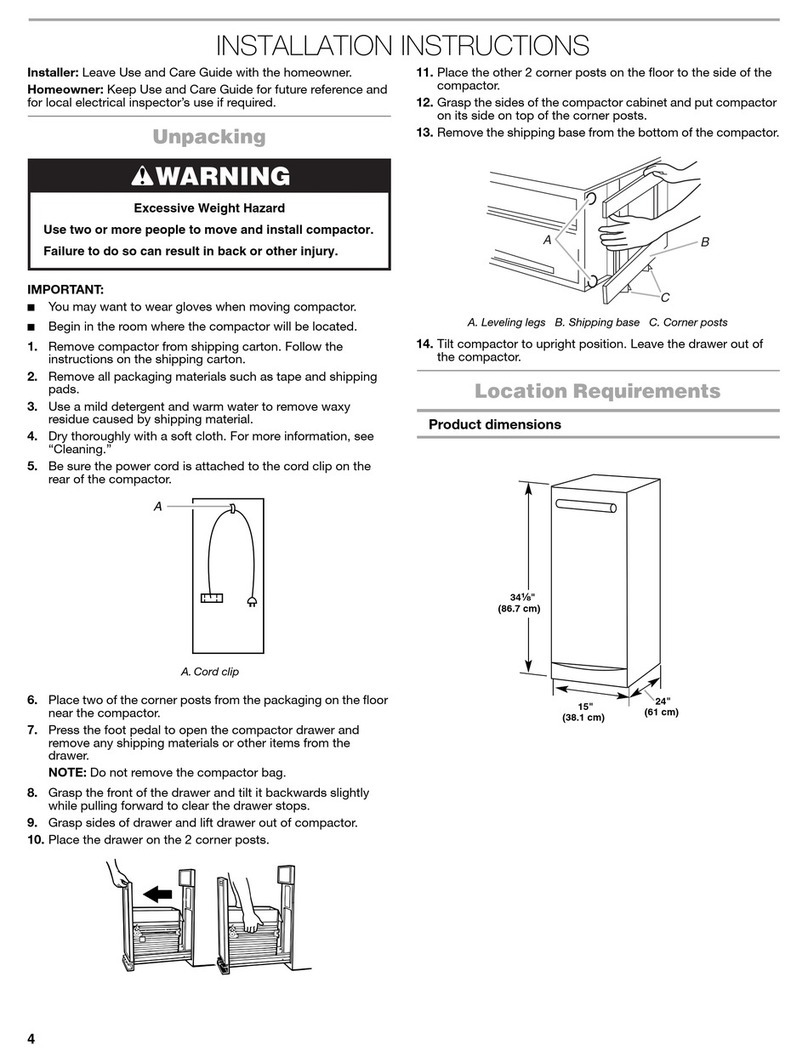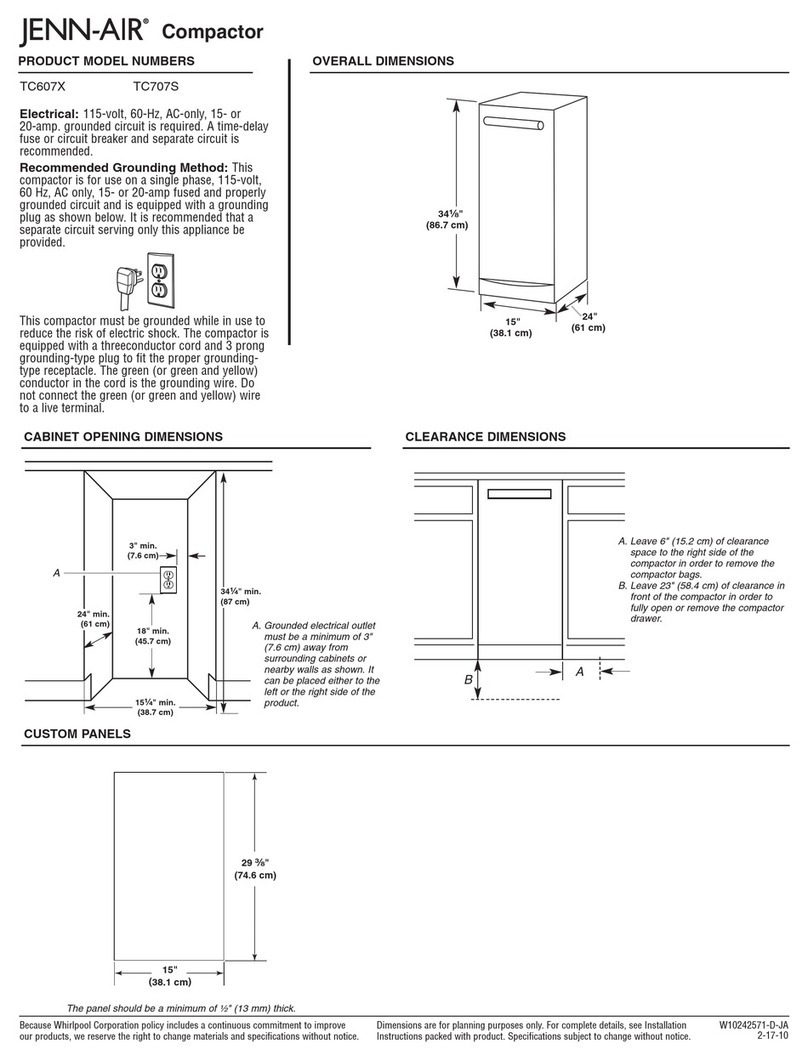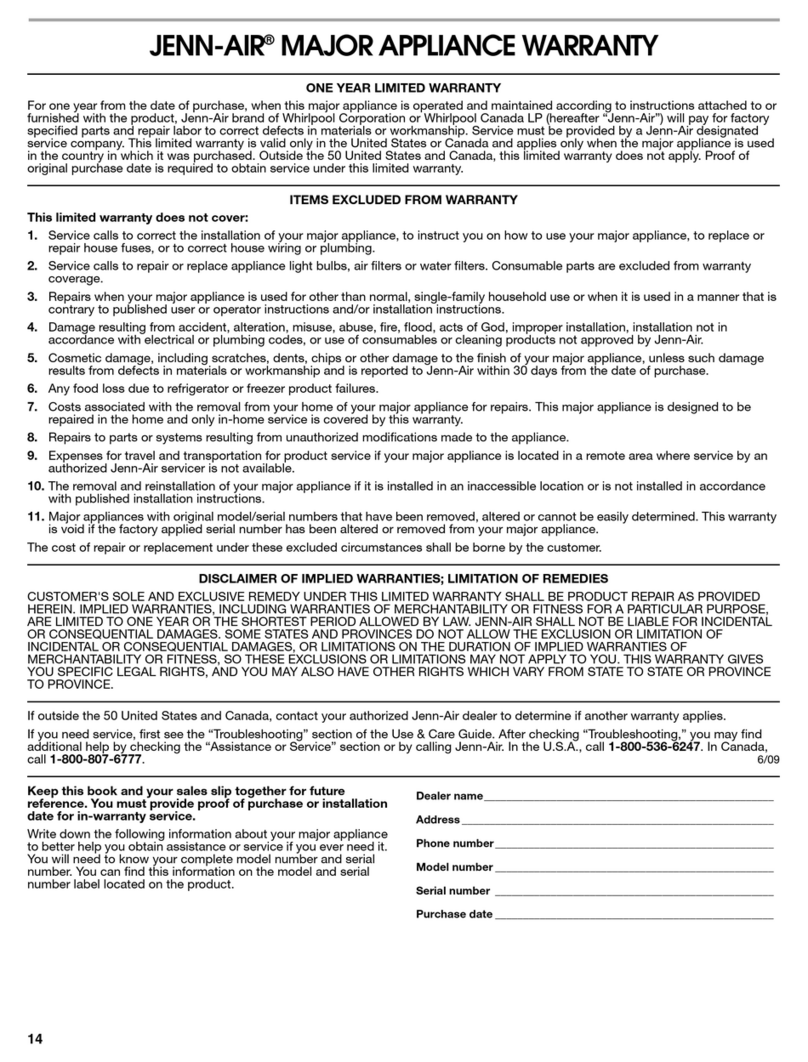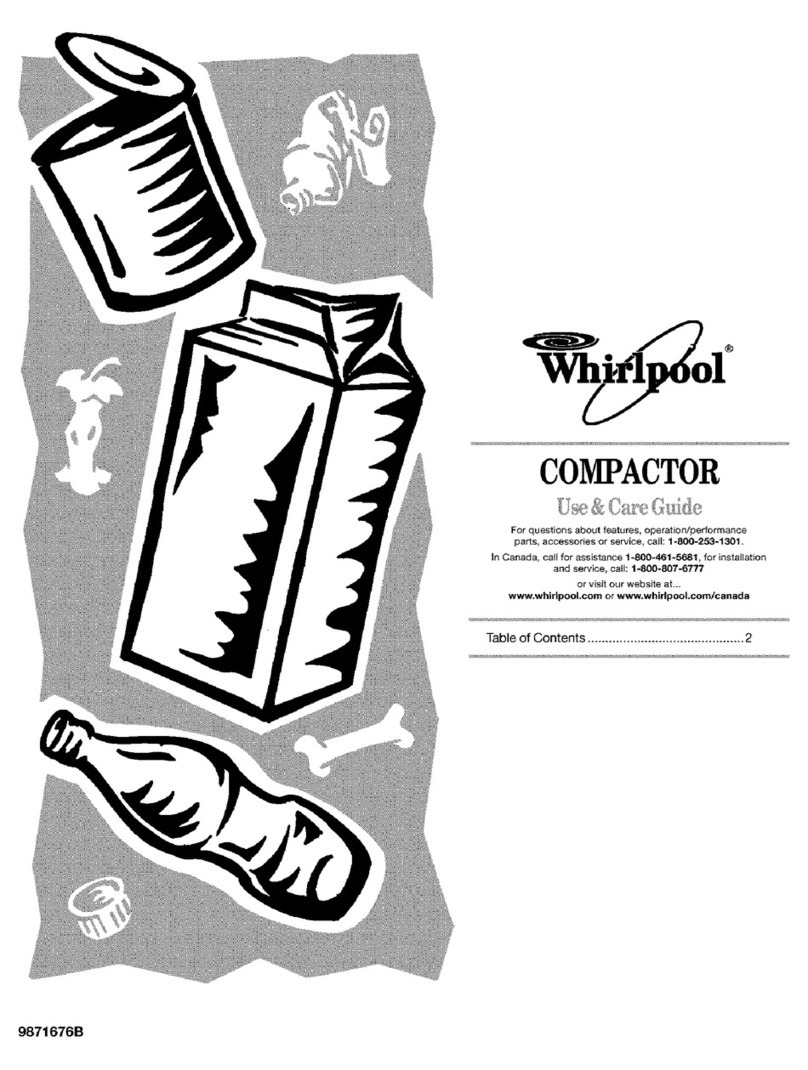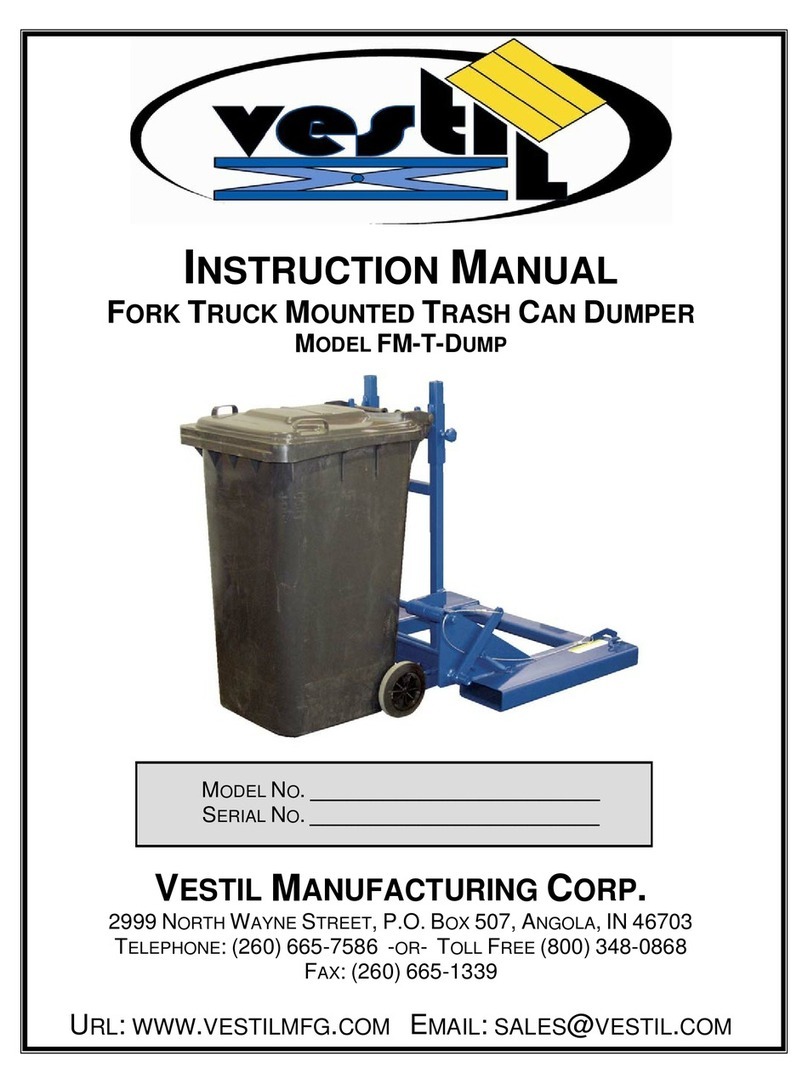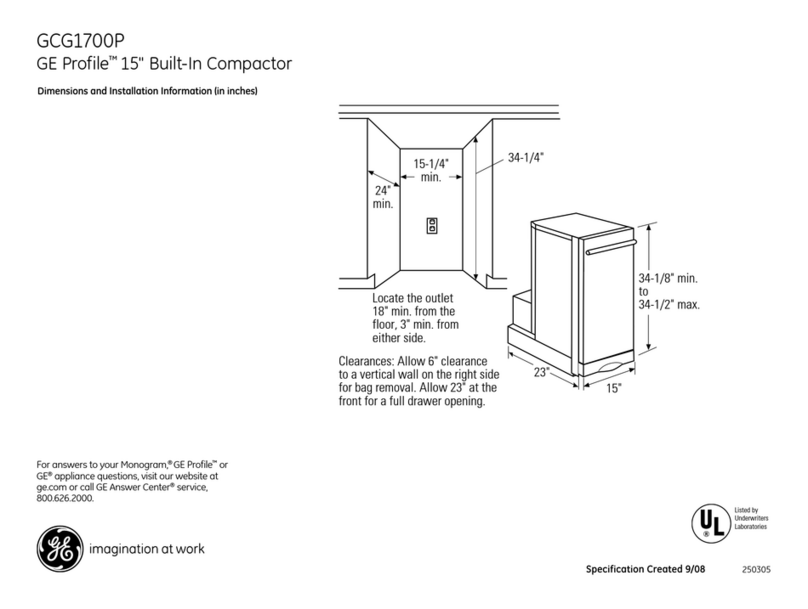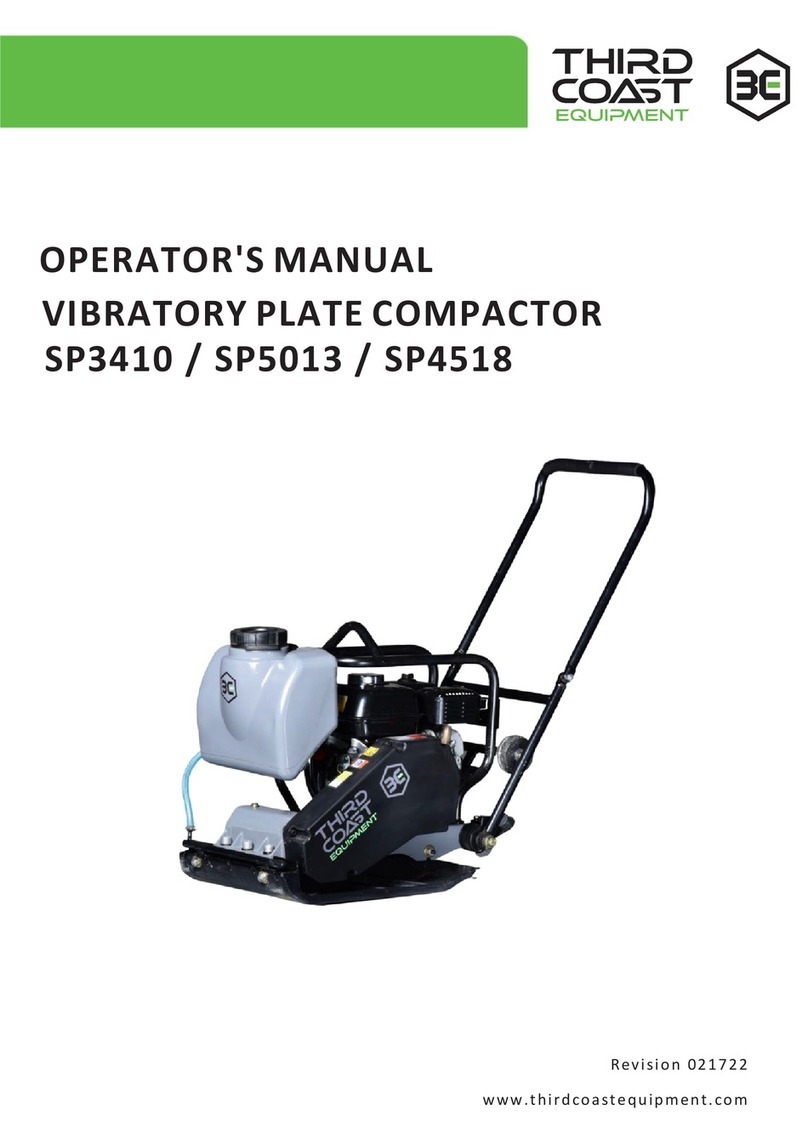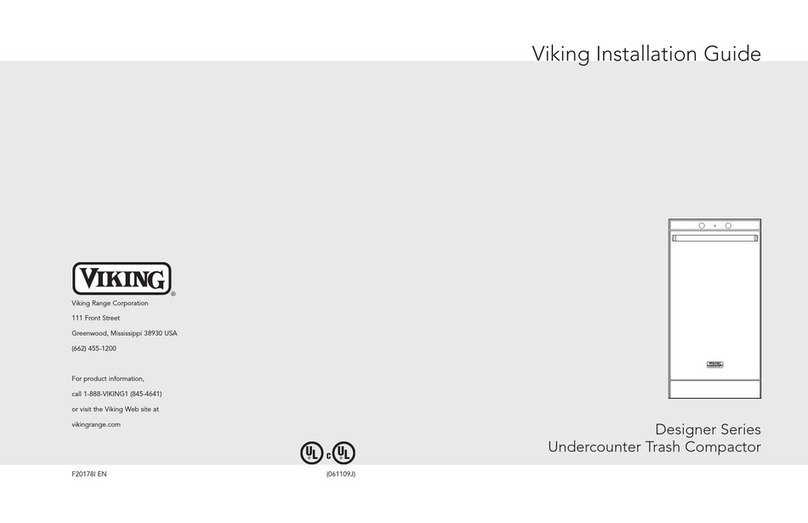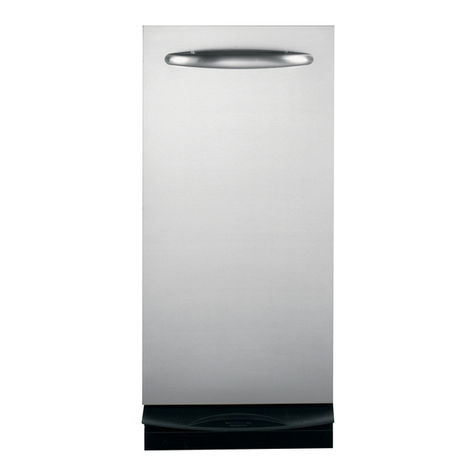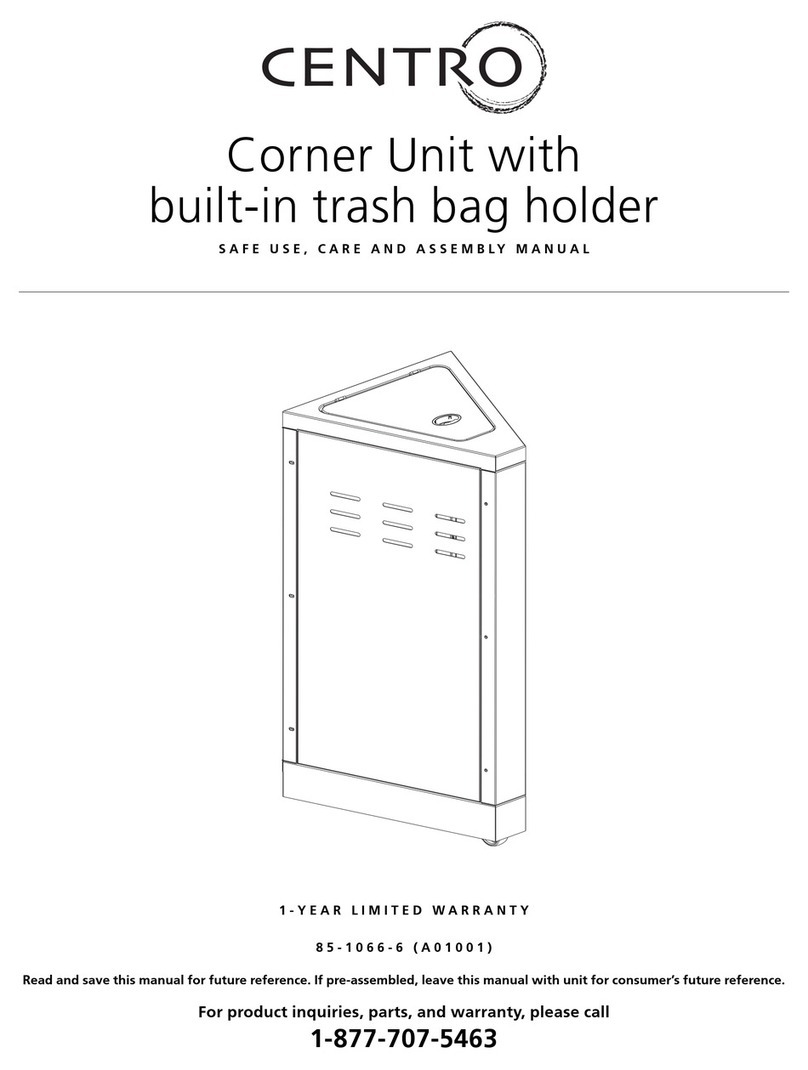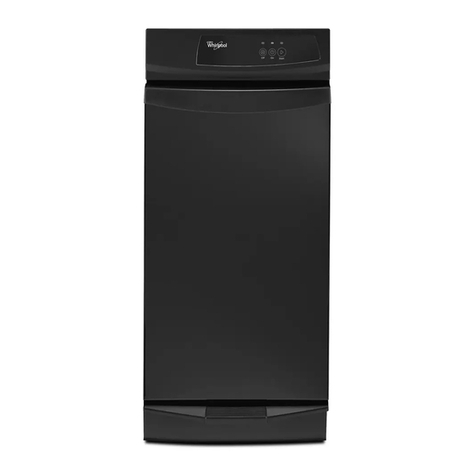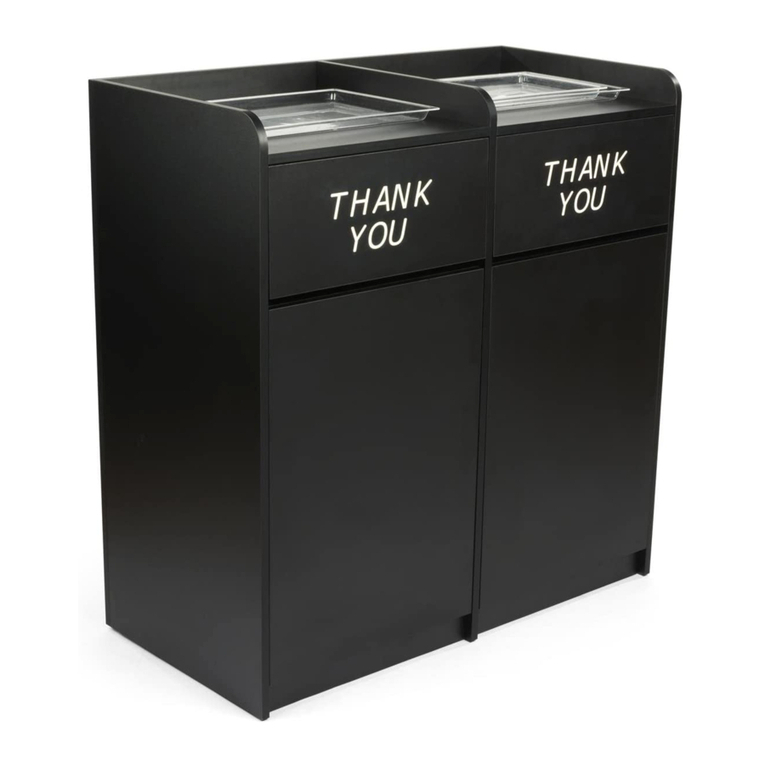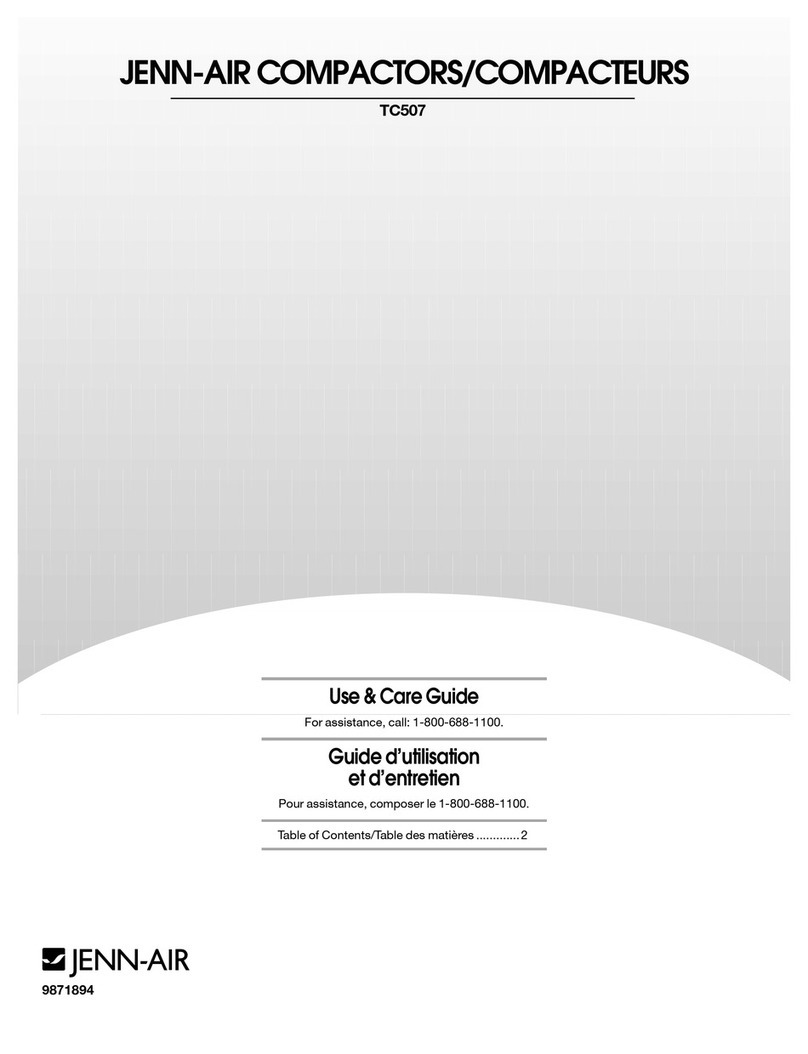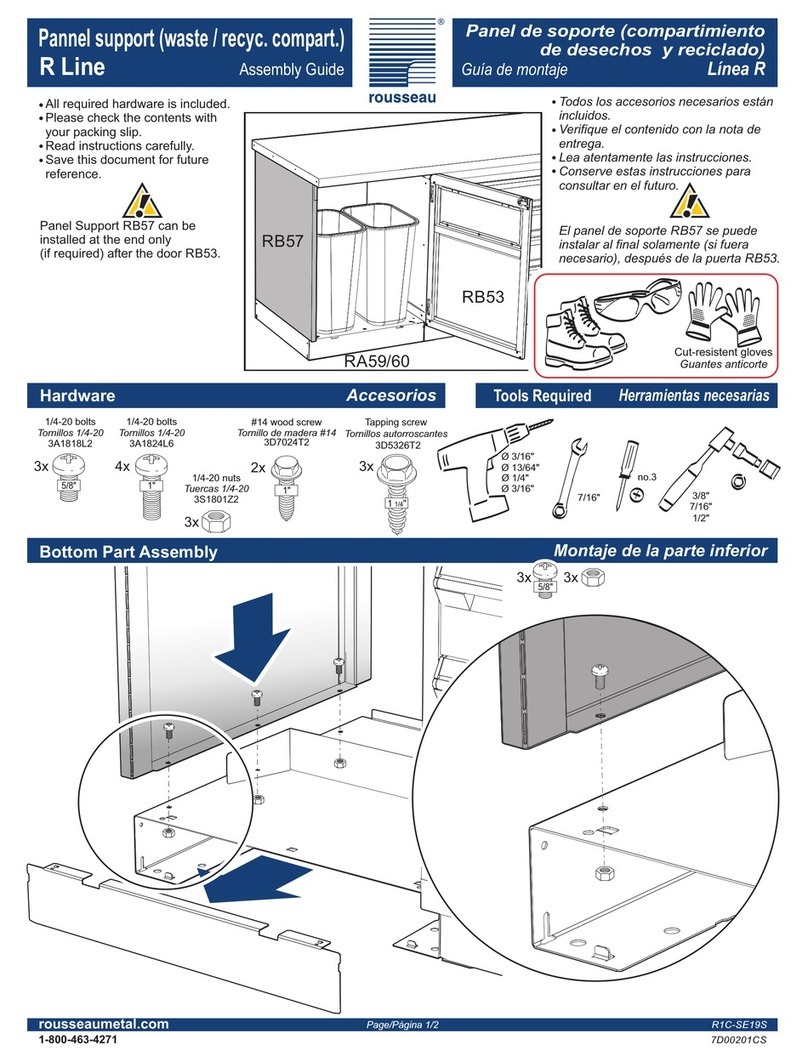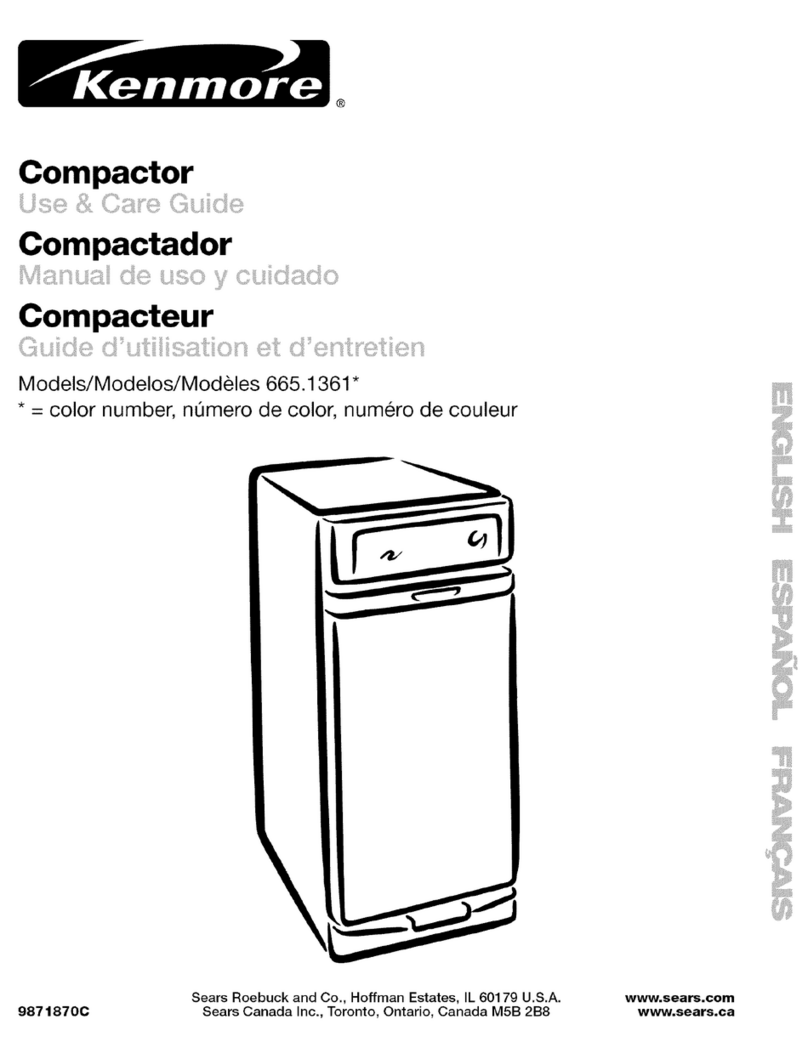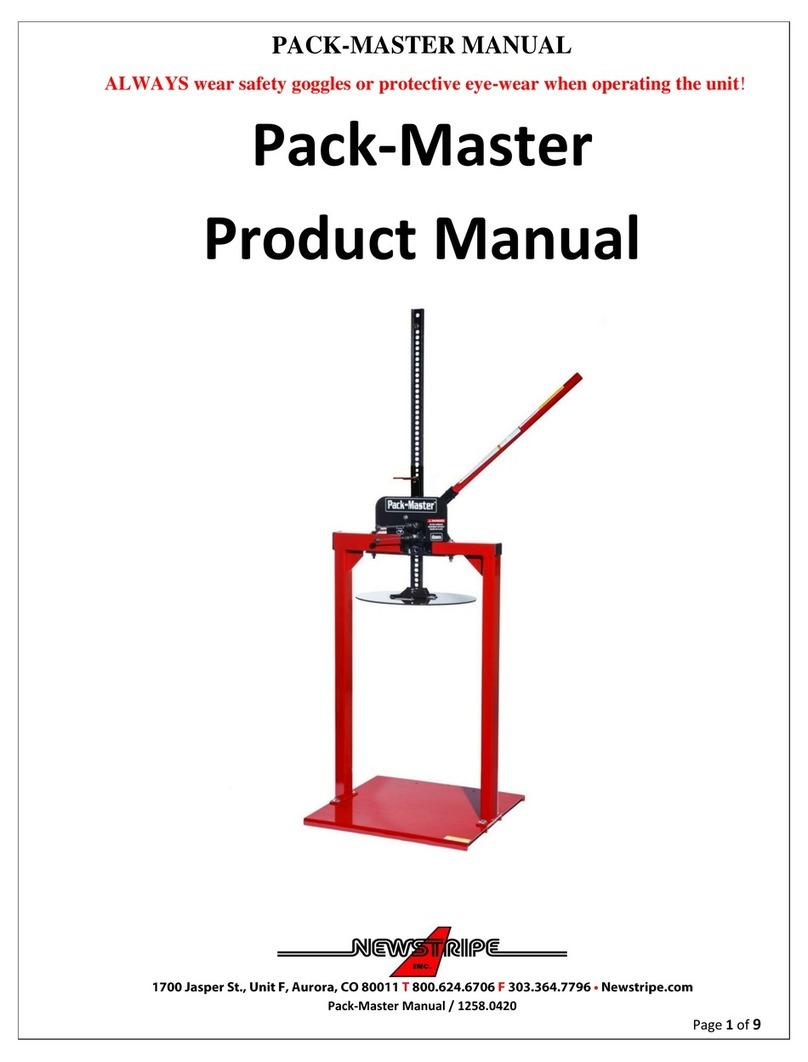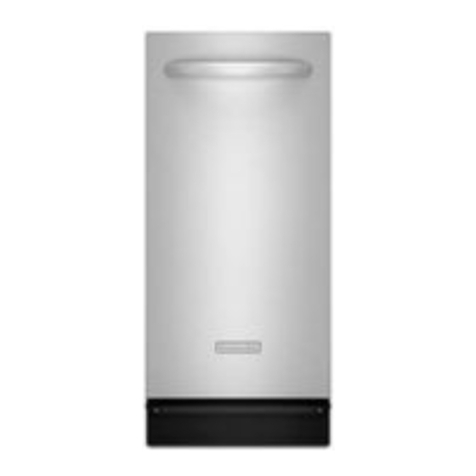8
Undercounter installation
NOTE: Installation hardware is not provided with full
cabinet models.
1. Measure the height of your cabinet opening. The top of
the compactor should be at least 1⁄8" (3 mm) from the
top of the cabinet opening.
The rear wheels are preset for a cabinet opening
height of 341⁄4" (87 cm) (Position “A”).
To adjust for other cabinet opening heights, loosen
screw just enough to clear stud from hole in position
“A.” Move the rear wheel and stud to position “B” or “C”
as needed for your cabinet opening measurement:
Position B: 341⁄4" to 347⁄16" (87 to 87.5 cm)
Position C: 347⁄16" to 345⁄8" (87.5 to 88 cm)
Tighten screw. Repeat for other rear wheel.
A
cabinet
locating stud
self-tapping
screw (pivot)
wheel
bracket
assembly
B
C
Countertop mounting
mounting
screw
retaining
bracket
4. Grasp sides of compactor drawer and place bottom
of drawer into tracks. Lift at the handle so drawer will
go over drawer stops. Close drawer. Check if drawer
opens freely. If the toe plate rubs against floor, see the
“Adjusting the toe plate” section for further instructions.
6. Grasp sides of compactor drawer and place bottom
of drawer into tracks. Lift at the handle so drawer will go
over drawer stops. Close drawer. Check if drawer opens
freely. If the toe plate rubs against floor, see the
“Adjusting the toe plate” section for further instructions.
Cabinet-front mounting
mounting
screw
retaining
bracket
mounting
clip
2. Use pliers to lower leveling legs away from cabinet.
Adjust legs so there will be a 1⁄8" (3 mm) to 1⁄4" (6.4 mm)
space between the top of the compactor and the top of
the cabinet opening. Stand the compactor upright.
3. For model with cabinet, remove the plastic plugs from the
compactor cabinet top.
4. Determine if you want the compactor frame or drawer
front flush with the cabinet front.
Using the two #8 -18 x 5⁄16" screws, install the retaining
brackets to cabinet top as needed:
If the compactor frame is to be flush with the cabinet
front, place retaining bracket screws through “A.”
BA
retaining
bracket
C
countertop
If the compactor drawer front is to be flush with the
cabinet front, place retaining bracket screws through
“C.”
If the compactor is to be midway between “A” and
“C,” place retaining bracket screws through “B.”
5. Carefully lift the front slightly and roll compactor into the
cabinet opening.
Using the two #8 -18 x 1⁄2" screws, fasten the retaining
brackets to the underside of the countertop with the
mounting screws.
If brackets cannot be attached to the underside of
countertop, attach mounting clips to brackets. Fasten
compactor to cabinet front with mounting screws
through mounting clips.
